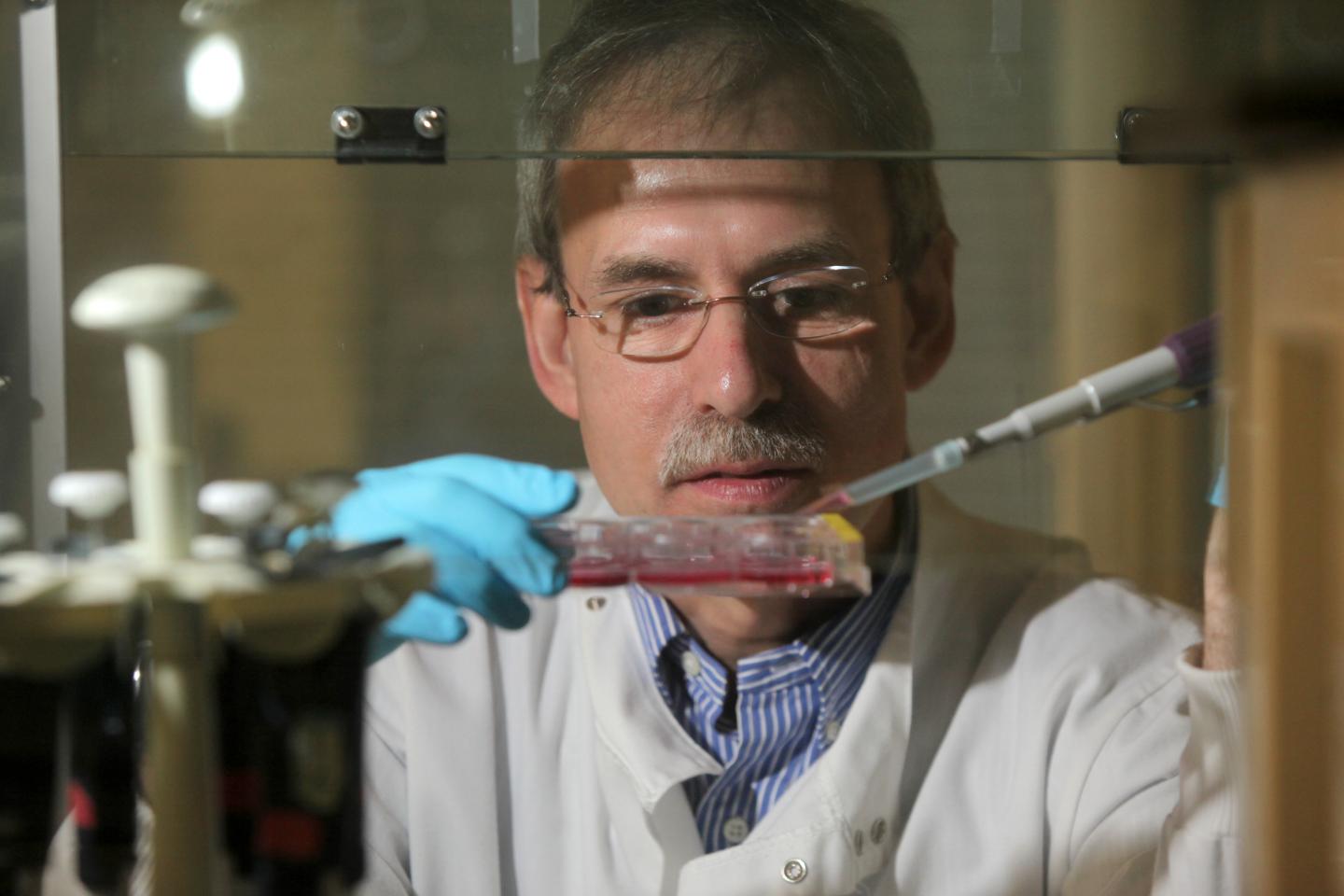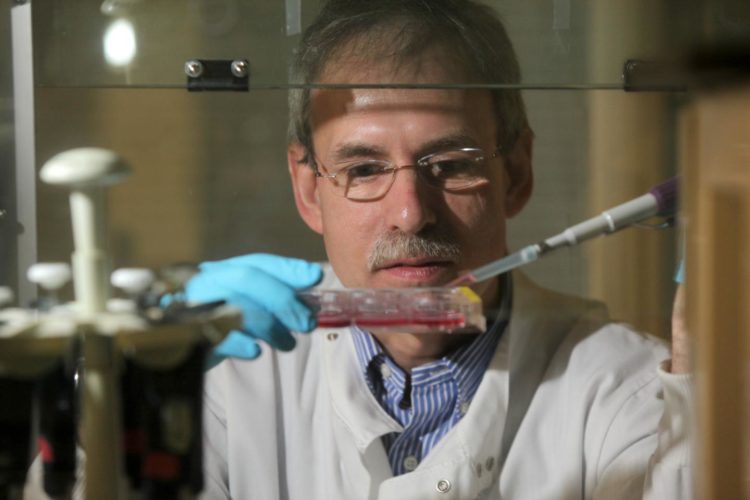
Credit: Newcastle University, UK
The damage visible and infrared light can do to our skin has been revealed for the first time in new research by scientists at Newcastle University, UK.
The detrimental effects of exposure to the sun’s rays are well documented, and the main aim of sunscreens is to protect the skin against dangerous ultraviolet radiation (UV).
However, experts at Newcastle University have now scientifically proven that UV rays are not the only type that can penetrate deep into the skin, as visible and infared light can also harm our skin’s cells.
The study, published online today in The FASEB Journal, reveals that the deeper dermal layer of the skin is damaged by UV, visible and infared light and that it may be beneficial for anti-ageing to protect our skin against all three.
Damage to skin
Professor Mark Birch-Machin, a professor of Molecular Dermatology at Newcastle University’s Faculty of Medical Sciences, led the European study and said these rays may contribute to the skin’s damage particularly when UV is present.
He said: “We protect ourselves from ultraviolet rays in sunlight using sunscreens to prevent sunburn, premature ageing and increased risk of skin cancer. However, along with UV, sunlight also contains visible and infrared light.
“It is important to consider that visible and infrared light may also be contributing to the damage our skin receives from the sun, and that it could be beneficial to protect our skin against these as well when UV is present
“In addition we found that our skin cells are sensitive not only to the single UV, visible and infrared wavelengths but also to their interaction within sunlight. This means on their own each is fine but when combined the effect is enhanced, like in boxing – the first blow, the UV, does the major damage and then the smaller jabs, punches two and three, represented by visible and infrared topple the boxer to the floor.
“Visible and infrared on their own have a small effect on skin damage but their potency is increased dramatically when UV is present.”
The study looked at whether UV, visible and infrared light from a solar lamp – which mimics natural sunlight – had an effect on markers of damage in skin cells from human adults.
It was found that cells from the top layer of the skin (keratinocytes) were damaged by UV light, and were not damaged further by “complete” solar light containing UV, visible and infrared light.
In contrast, cells from the dermal layer deeper in the skin (fibroblasts) were damaged by UV as expected, but had greater damage from the complete solar light. These cells were more damaged by the inclusion of the visible and infrared light, which left the keratinocytes unaffected.
Assessing skin protection
Professor Birch-Machin said: “Further experiments showed that while each of these three light components caused damage on their own, the impact of the combination was far greater at a deep skin level.
“People should not be worried if they are following a good sunsmart lifestyle as recommended by national skin charities. However, this study provides key detailed information to help the commercial sunscreen industry in their ongoing protection strategy offered by suncreams and by looking at ways to protect our skin from ‘complete’ solar light.”
Visible and infrared light do not cause sunburn and they are not known to directly be a skin cancer risk.
Further research will be done by Newcastle University scientists to understand the mechanism of the synergistic effect of combined UV, visible and infrared light. In addition, they will look at why the deeper dermal fibroblasts are more sensitive than the top-layer epidermal keratinocytes.
###
Reference: Individual and combined effects of the infrared, visible, and ultraviolet light components of solar radiation on damage biomarkers in human skin cells. Mark Birch-Machin et al. The FASEB Journal. Doi: 10.1096/fj.201902351RR
https:/
Media Contact
Karen Bidewell
[email protected]
01-912-086-972
Related Journal Article
http://dx.





